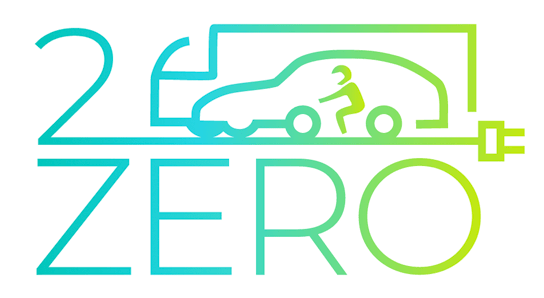COSIVU – Compact Smart and Reliable Drive Unit for Commercial Electric Vehicles (July 2015)

- Website: http://www.cosivu.eu/template.asp
COSIVU is an FP7 project financed within the program “ICT for electric vehicles”. (GA no: 313980). It is a three year project that started in October 2012 with a budget of 5,2 M€ and an EU contribution of 3,4 M€. It is coordinated by Swerea IVF with participation from nine partners in three countries.
Overview
COSIVU has developed a novel system architecture for drive-trains consisting of a smart, compact and durable single-wheel drive unit including
- Integrated electric motor
- Inverter with SiC based power electronics
- Novel control and health-monitoring system with wireless communication
- Advanced ultra-compact cooling solution
A schematic of the drive train solution is shown in Figure 1. In the final 6 months of the project this solution is in the process of being finalised both for use in a commercial vehicle (VOLVO) and for a passenger car (Elaphe).

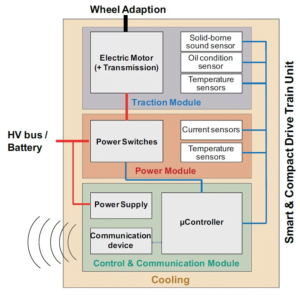
Figure 1: Topology of the drive-train concept aimed at by COSIVU
Inverter solution based on fully SiC Inverter Building Blocks – IBB
The use of Fairchild/TranSiC bipolar SiC transistor switches and Schottky diodes imply a 50% decrease in losses compared to an IGBT solution. This means that the cooling is less challenging which in turn allows for a more compact cooling circuit and therefore enabling higher integration. The complete inverter system is now small enough to be integrated right into the traction module. With the highly integrated drivetrain system architecture, the external connections to the vehicle can be reduced to a minimum: only 600V HV, 24 V LV, water-glycol fluid cooling and communication connection via CAN and wireless is needed. The motor and the inverter use the same cooling circuit via self sealing connectors allowing a plug and play solution.
A modular approach for the inverter solution was designed by Fraunhofer IISB based on what we have named Inverter Building Blocks (IBBs) (See Figure 2). Figure 3 shows the complete inverter and the plug and play connection of the inverter to the wheel motor for Volvo heavy commercial vehicle application.



Figure 2: Directly cooled base plate with SiC power modules, Complete IBB with current sensor from Sensitec and drivers from TU Chemnitz, and Inverter with IBBs in different stages of completion.
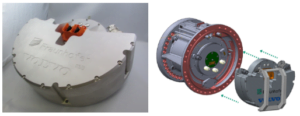
 Figure 3: COSIVU Inverter and its integration in the Volvo wheel motor
Figure 3: COSIVU Inverter and its integration in the Volvo wheel motor
Functional test of the passenger car electric motor
Elaphe has designed a high torque electric motor intended for passenger cars as a near wheel architecture. The system is using dedicated COSIVU inverters. Dynamic & diagnostic tests of the motor have been performed by Elaphe and in addition health & condition monitoring tests including vibration monitoring during operation via Hella box with an integrated sensor. The motors, lab test rig, and the Elaphe COSIVU system “test vehicle” are shown in Figure 4.




Figure 4: Elaphe new high torque electric motors, motor test set up, and COSIVU system test vehicle using near wheel motor solution.
Double sided cooling solution, 2Cool
In order to explore an even higher efficiency and thereby a potentially even more compact realisation of an inverter, a double sided cooling solution shown in Figure 5 has been investigated by Swerea IVF in parallel with the single sided solution shown in Figures 2 and 3. FEM and CFD simulations have been performed to optimise the design of the heat exchangers and the packaging solution as a whole.




Figure 5. Double sided 2Cool solution with and without heat exchangers. CFD result of heat exchanger to the right.
FEM simulation and reliability testing of SiC BJT power modules
FE simulation results for lifetime assessment and design optimization have been performed early on and some results are shown in Figure 6. To verify the designs experimentally, power cycling tests on single-sided as well as on double-sided cooled power modules are performed on test benches designed for this purpose by Fraunhofer ENAS and Nanotest (Figure 7).


Figure 6: FE simulation of SiC power module. Critical parts are detailed to the right.



Figure 7: Test bench for single-sided and double-sided cooled power modules respectively:
Wireless communication is important for safety and redundancy and Figure 8 shows simulation results as well as the positioning of the antenna for the Elaphe test vehicle.

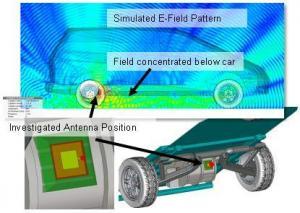
Figure 8: Simulation and implementation of wireless solution for Elaphe system.
Project partners:
![]()
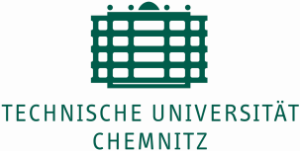




![]()

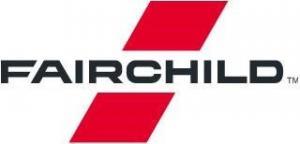
![]()
![]()
![]()
![]()
![]()


![]()

![]()
![]()
![]()

